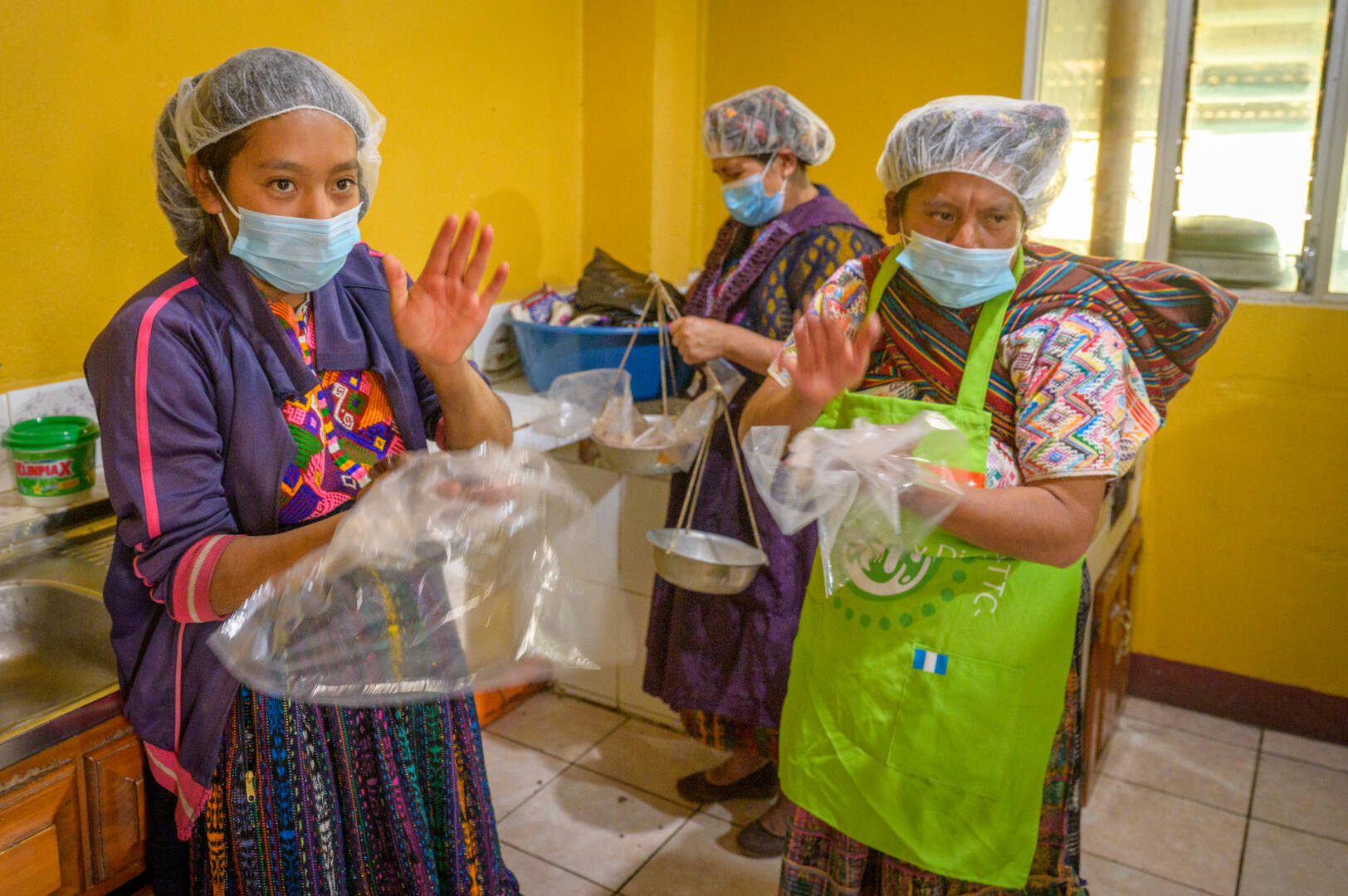Finding their worth through making chocolate
Photos and story by Laura Reinhardt
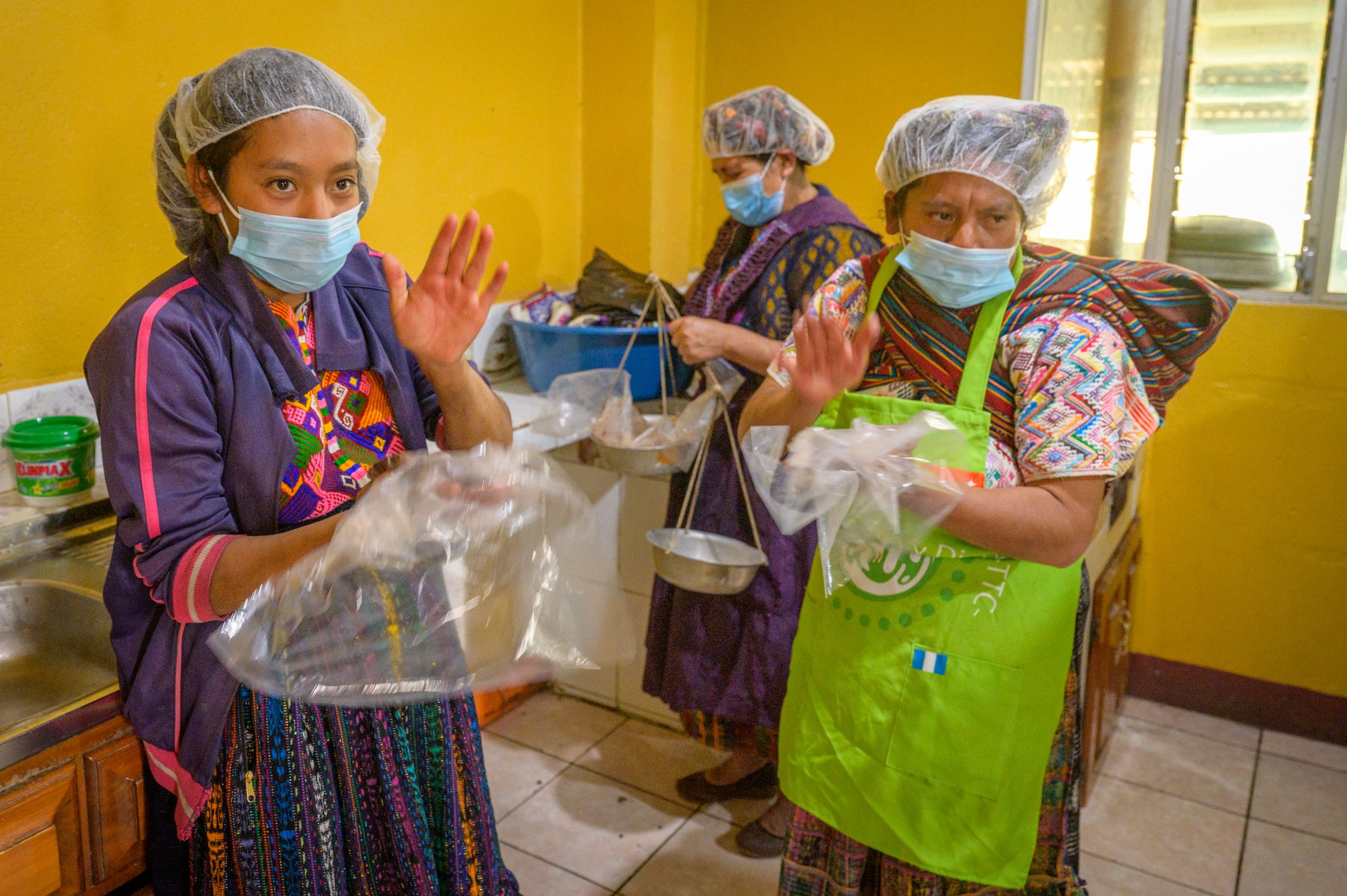
Women make chocolate bars in Concepción Chiquirichapa and increase their families’ incomes.
Women make chocolate bars in Concepción Chiquirichapa and increase their families’ incomes.
The sounds of women’s conversation, laughter, and hands pounding fill the air in the kitchen of an old apartment building in Concepción Chiquirichapa, Guatemala.
Women dressed in colorfully woven traditional Guatemalan dresses take turns at a variety of jobs to make chocolate, such as weighing portions of ingredients, working the cacao paste, and molding the chocolate.
The lively beat of women slapping roasted cacao paste — the result of grinding the cacao beans — echoes throughout the space. This process turns the paste from dull to glossy, creating the chocolate product they want.
Once the chocolate reaches the desired shiny state, it is handed over to another group, who uses metal forms to shape big squares of chocolate.
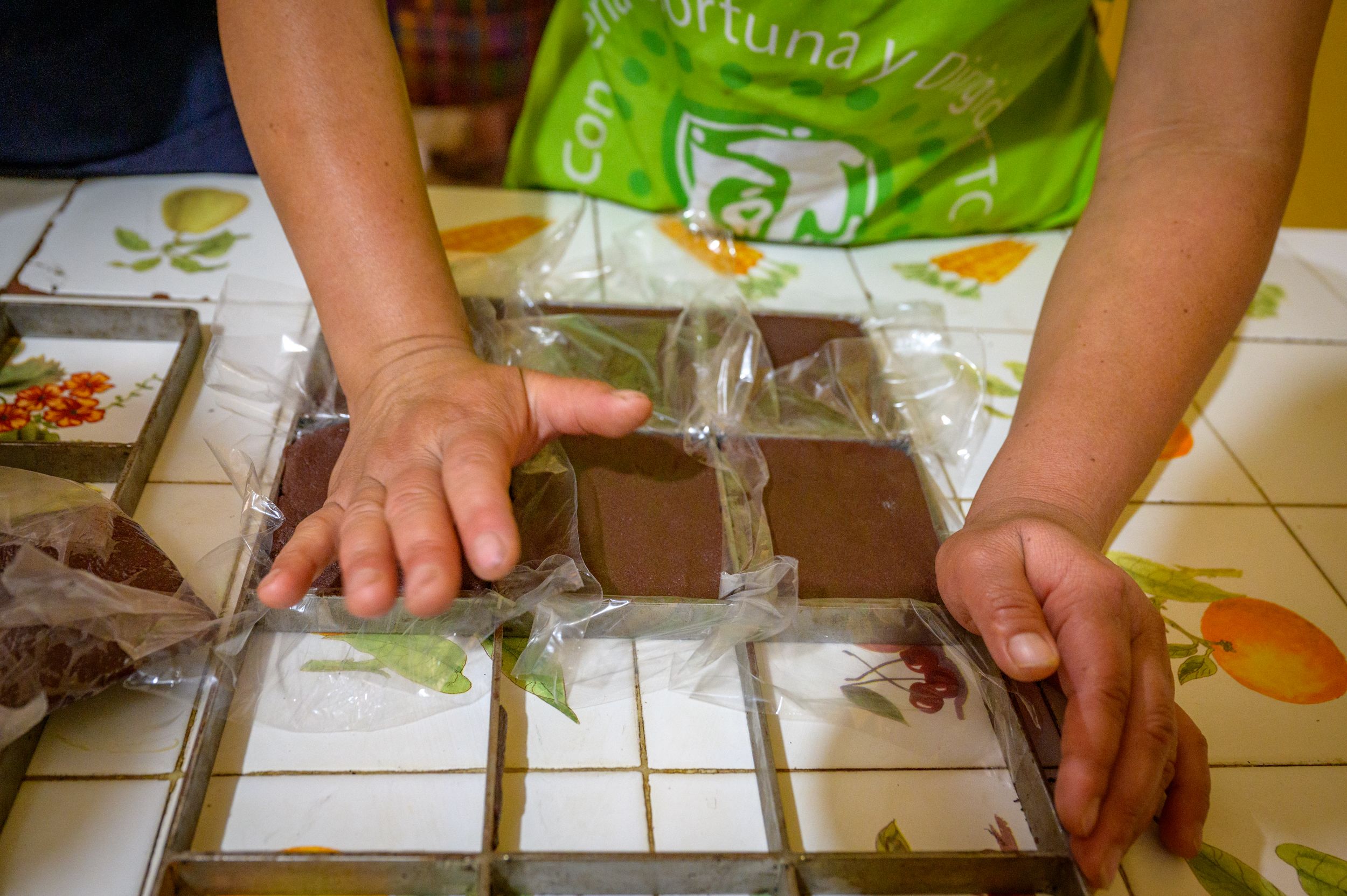
Chocolate goes into these molds so it takes a uniform shape.
Chocolate goes into these molds so it takes a uniform shape.
After the chocolate solidifies, the women remove the squares from the form, wrap two squares together in plastic wrap, then carefully place a label on the outside. Now it’s ready to sell.
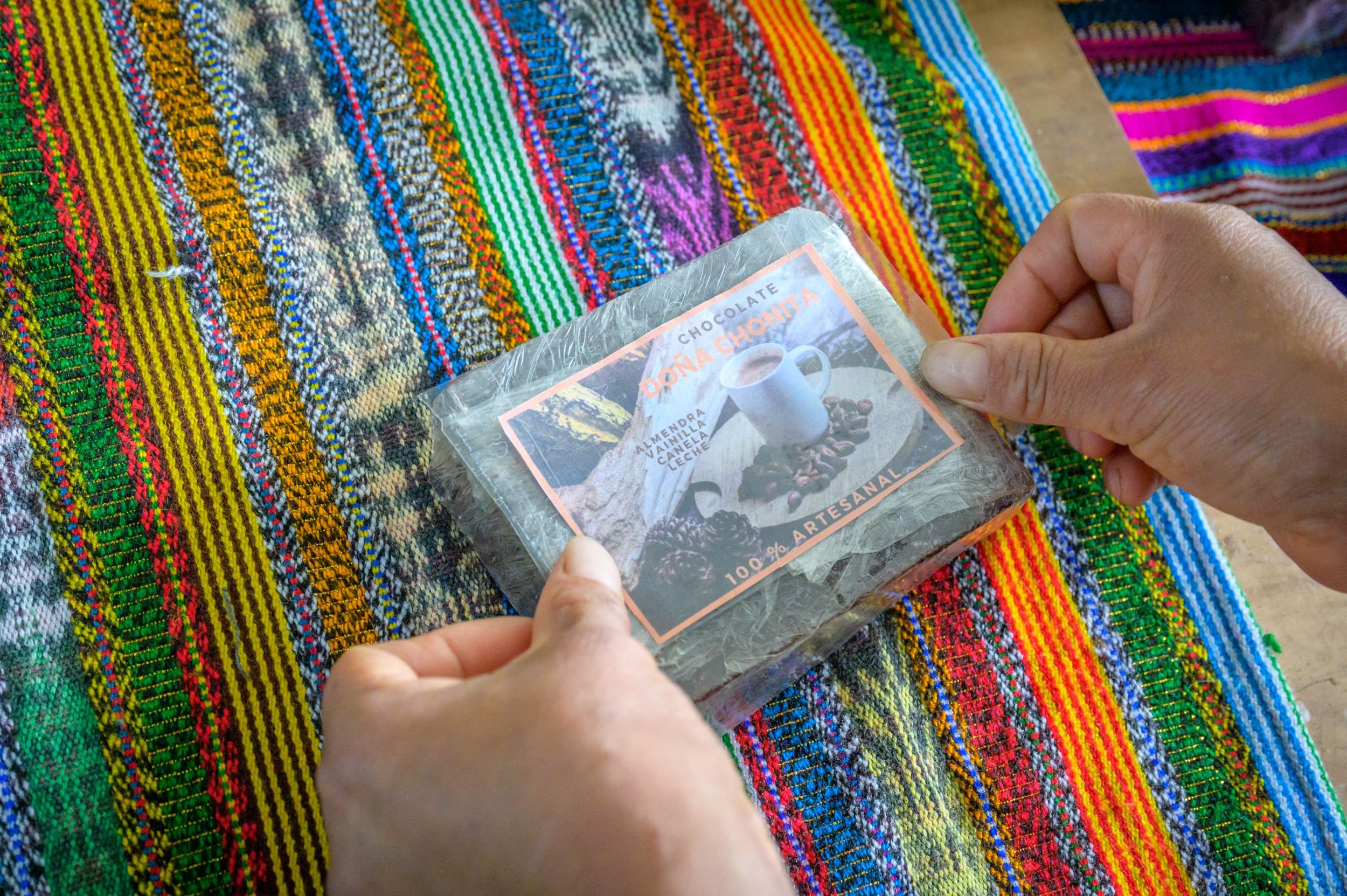
Putting the label on the packages means the bars of chocolate are ready to be sold.
Putting the label on the packages means the bars of chocolate are ready to be sold.
Building a livelihood through chocolate
But how did this mini chocolate factory get started?
Several years ago, this group of women were in a savings group in their community, which is part of World Vision’s economic empowerment program. Through a variety of trainings, the women learned about financial literacy and the power of saving money. They also gained the inspiration to earn their own incomes.
One of the group members, Estelverta, says, “We needed to produce more money because we didn’t have a fixed income.”
In their community, men were the ones who worked outside of the home to earn money. Women here had little education and usually didn’t graduate from school. They spent their lives mostly working in the fields and caring for their children.
Estelverta continues explaining that four of the nearly 20 savings group members went to a chocolate-making workshop.
The bars of chocolate that they produced at the workshop were intended to create a hot chocolate drink. To make the drink, people simply grate or cut off part of the block and melt it in milk. It’s a popular afternoon treat in this mountainous part of Guatemala where the temperatures can be quite chilly.
Aura, another group member, remembers being inspired at the workshop: “We came back with the idea. We sold all the chocolate that they gave us [at the workshop].”
The women who attended the chocolate-making workshop talked with the other women of their savings group and agreed they wanted to pursue making chocolate as an income-generating business. However, the few hours of training in the workshop weren’t enough for them to feel confident in starting a business.
This is when they approached World Vision staff member Gloria Marleny Velásquez López (affectionately called “Miss Gloria”), who works with and supports the savings group. She researched and, through a World Vision government partner, found a female engineer, Eunice Rabinales, who could train all the group members in chocolate-making. Eunice not only shared good techniques for making the bars but also helped them with ideas for packaging. She also put the group in contact with a local mill that could grind the cacao.
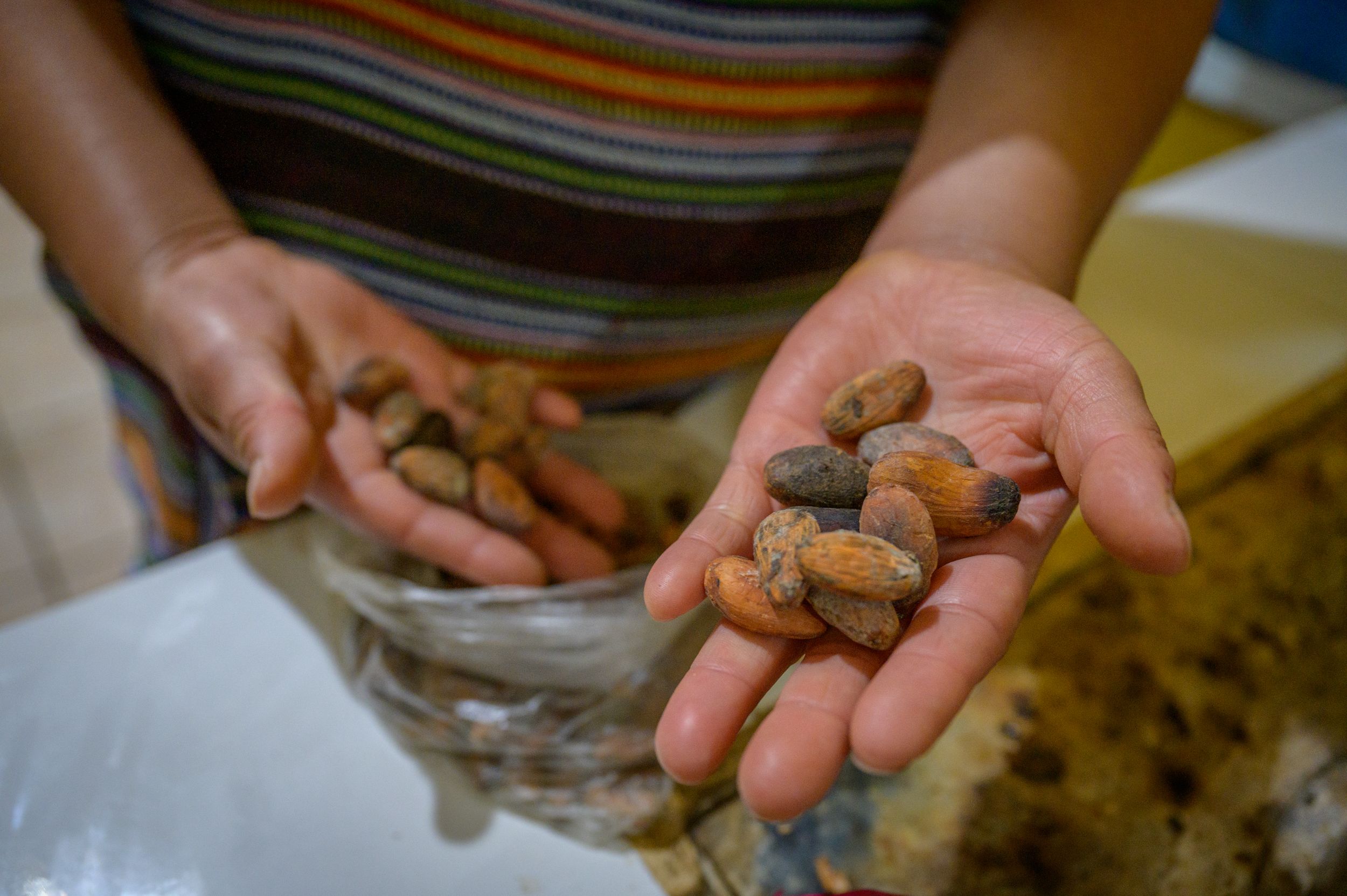
The chocolate process starts with cacao beans that are roasted and then sent to be ground.
The chocolate process starts with cacao beans that are roasted and then sent to be ground.
World Vision also supported getting the rest of the group trained in chocolate-making by providing the cacao, milk, and vanilla to help them launch their business. And then when the women were ready to begin selling the chocolate, World Vision helped out with the labels too.
It took about six months for the saving group’s dream to take off, starting with the purchase of their first chocolate form. They launched their company in March 2022.
Traditional roles lead to initial resistance
The start-up business wasn’t without its difficulties at first. The group consisted of women in a variety of stages of life: Many were single mothers, some women were pregnant, and there was at least one widow. And lots of the women were married with young families, who traditionally stayed home caring for children and tending to household duties. Guatemalan culture traditionally contains a degree of machismo, where men often don’t want their wives to work outside the home because they view that as the husband’s role.
Still, for group member Aura, her husband and in-laws were initially supportive. However, once she started spending more and more time attending trainings and wasn’t always available to pick their children up from school or to have her husband’s meal ready when he came home from work, he told her to stop coming. He told her that his new job with steady income earned enough to support the whole family.
But Aura didn’t want to give up her newfound income and growing independence. She continued to make chocolate with the other women.
One day, her husband wasn’t able to afford the school supplies their children needed. Aura explained to him that she was able to cover the cost of the supplies because she’d continued to work making chocolate. After the couple talked it through, they concluded that it was good for her to continue working because it contributed to their income.
Understanding women’s and girls’ value
Over and above the financial trainings and savings groups, World Vision’s economic empowerment program includes trainings about gender equality. This particular topic resonated with the women of Concepción Chiquirichapa.
“It is important because there is male chauvinism in the community,” says Estelverta. “Our husbands used to have the last word at home.” That was because they were the ones bringing home the money for the family. But, like in Aura’s situation, Estelverta notes that often the jobs the men find aren’t enough to fully provide for their families.
“Now we know that we have rights. Now we know our voice matters.”
“Now we are equals. We are providing,” Estelverta says. “Now we know that we have rights. Now we know our voice matters.”
And these changes aren’t just affecting the lives of women in the group. They’re affecting the futures of their daughters.
Before, many of the girls in the community dropped out of school early. Men didn’t see the value of keeping their daughters in school because they were just going to get married anyway. But now the men understand that it’s equally important to educate both their sons and their daughters.
And they’re beginning to see their wives as their equals. There’s more conversation now around how the household will be run rather than the husband making all of the decisions.
Beyond gender equality, the women also learn important lessons about seeing the intrinsic and equal value each person has within their group, as one of their members has a physical disability. “We must leave discrimination behind,” says another member, Glindy.
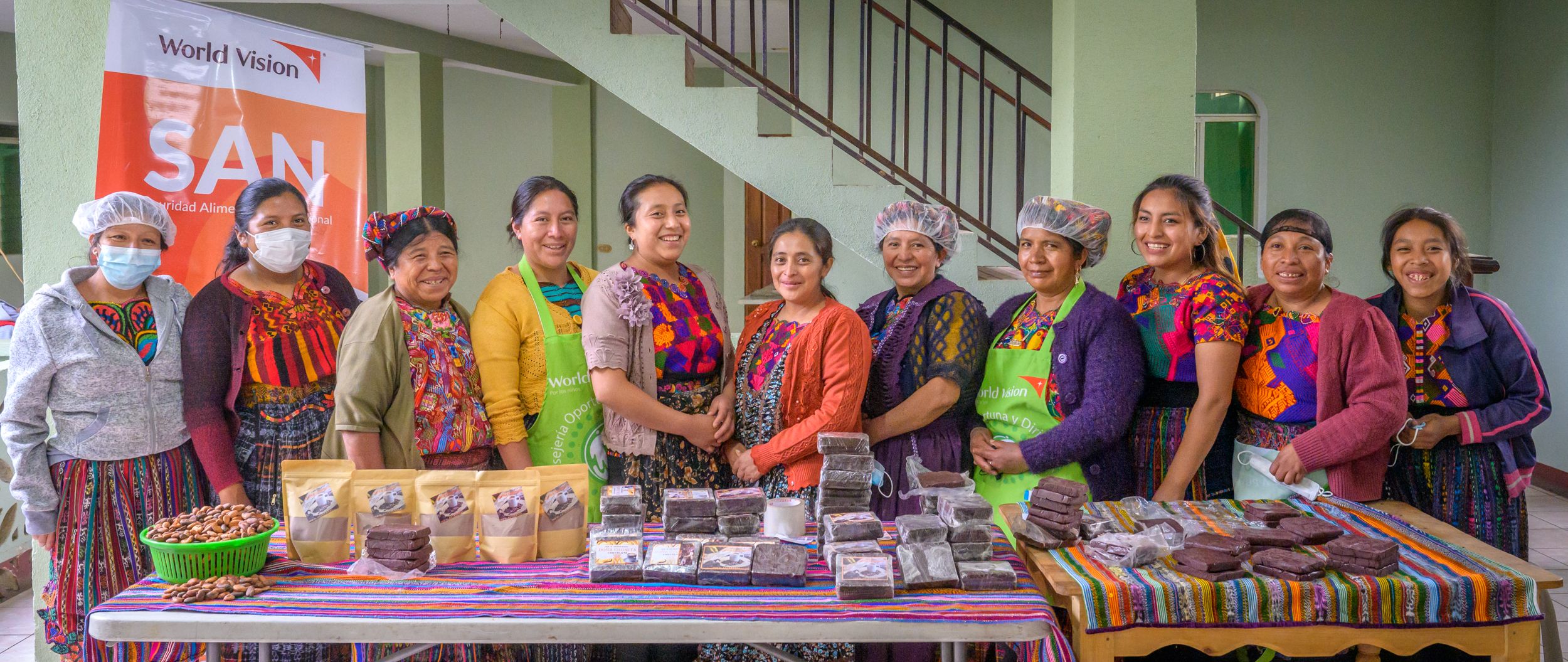
The women are all smiles standing behind their life-changing chocolate products.
The women are all smiles standing behind their life-changing chocolate products.
Using talents wisely — together
Glindy offers advice to other groups that might just be getting started on a business: “Work together. It’s teamwork. Accept every person as they are.” Then she adds that in order to successfully run the business, they must decide on the rules for the group and the business together, then commit fully to those rules.
Estelverta likens the ladies to the servants in the Bible’s parable of the talents. “I want you to let everybody know that we were given the five talents in the Bible story. We were given not one, not two, but five, and we didn’t bury them,” she says. They are savoring all of the opportunities they’ve had through the savings group and the chocolate-making business and using them to lift each other up.
Growing their vision
Community support of the women contributes to their ability to move forward. “People are helping us. They are buying our chocolate. They are drinking our chocolate,” says Estelverta. “They promote our group.”
Another aspect of World Vision’s economic empowerment work involves helping small businesses like this get access to markets. “As a matter of fact,” Estelverta continues, “there is a coffee shop where World Vision has helped us to introduce our chocolate [to sell].”
And the women are expanding their products with their resourcefulness. Instead of throwing away bars that have broken while coming out of the forms, they grind and sift the chocolate until it’s very fine, then package it up as a hot chocolate mix.
They also have a long-term goal to one day buy their own cacao mill so they can save money on the grinding process. Estelverta says, “We already have visions and dreams and plans that we are working on. They are on the table, and we are moving forward.”
But for now, they continue to reinvest their profits into the chocolate-making business so they can increase their production and make life sweeter for themselves, their families, and everyone in the community.
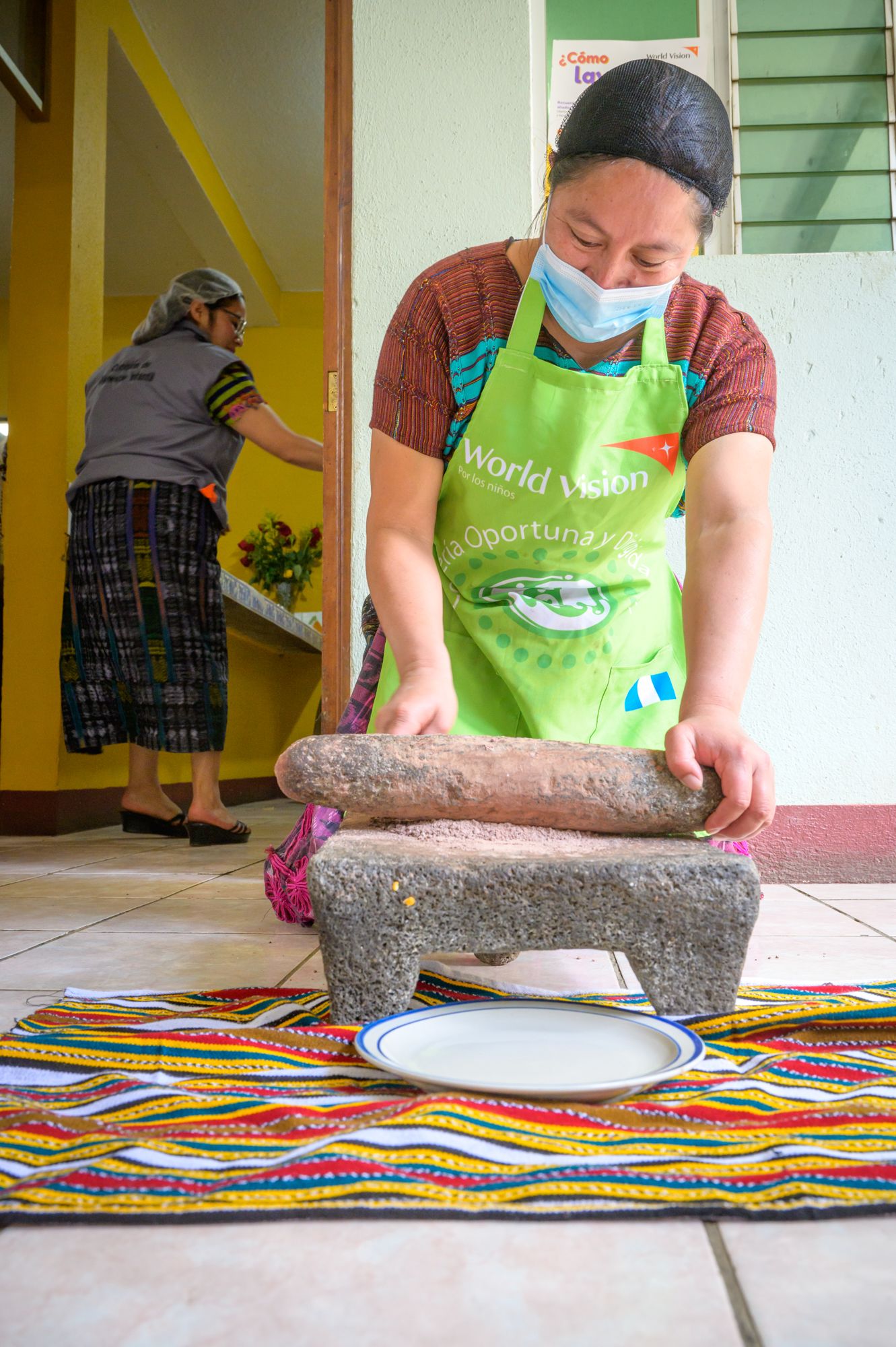
Estelverta grinds broken chocolate bars into a fine chocolate powder.
Estelverta grinds broken chocolate bars into a fine chocolate powder.
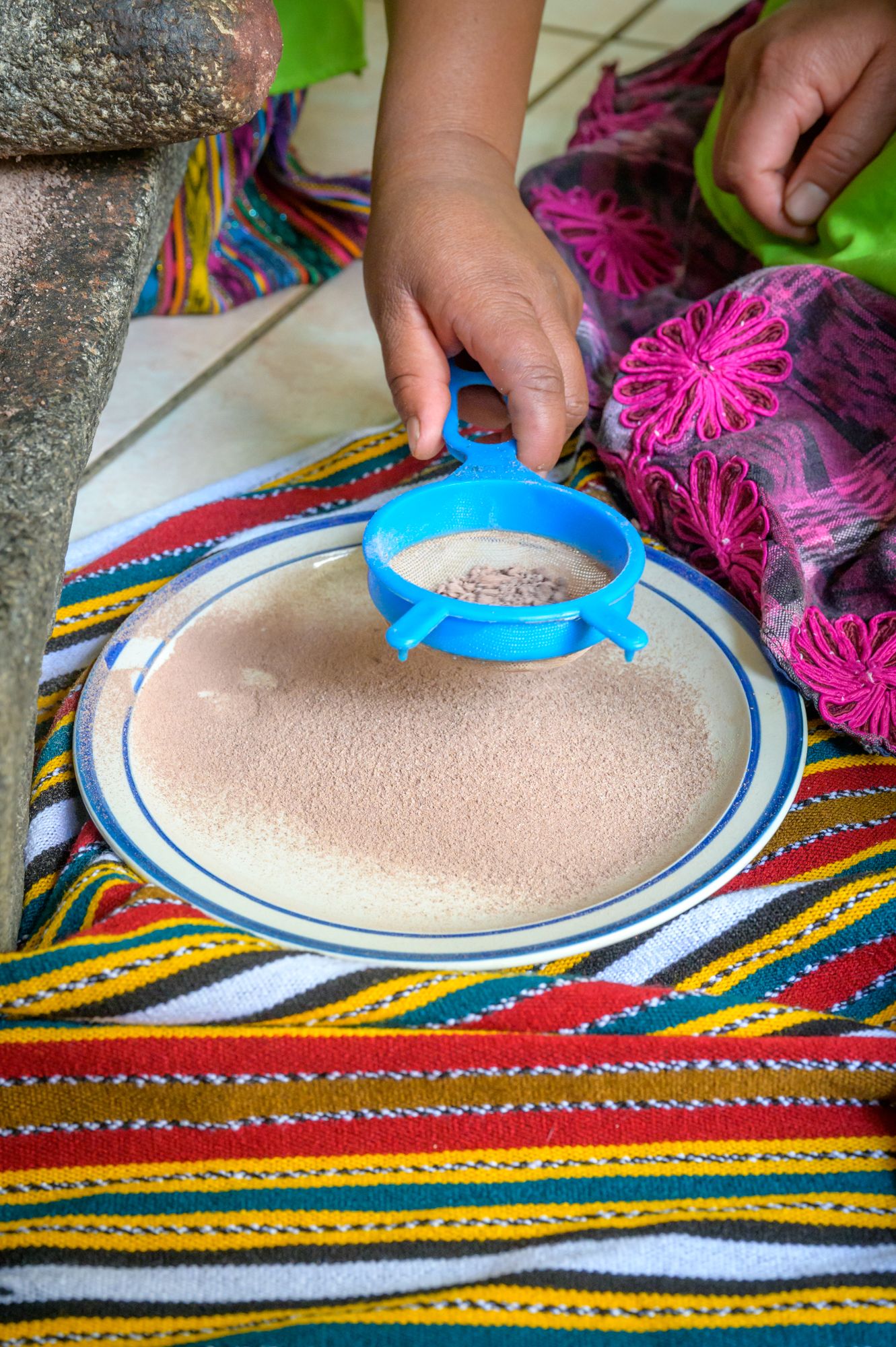
Savings group members sift the powder so only the finest grind gets packaged.
Savings group members sift the powder so only the finest grind gets packaged.
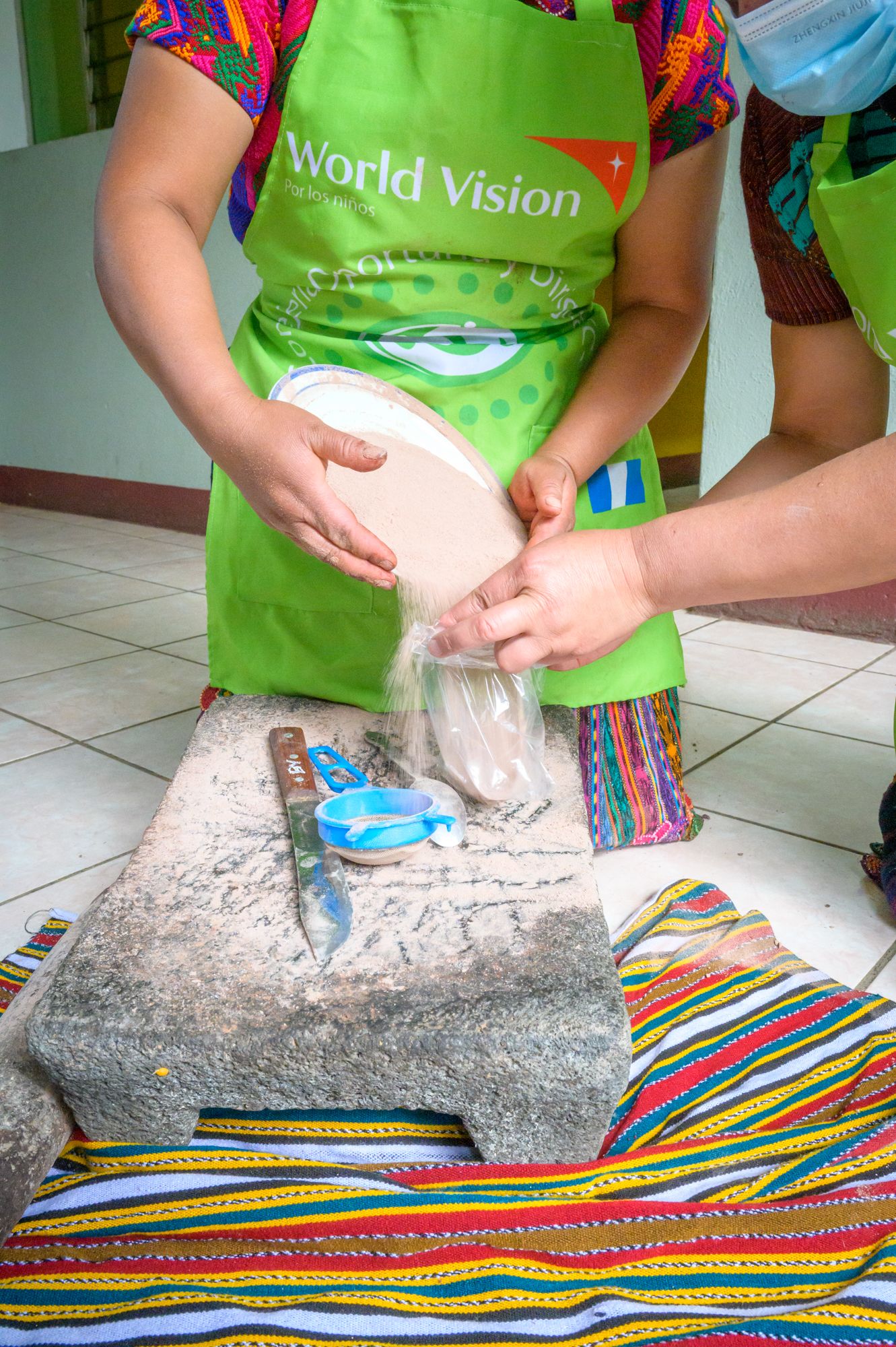
Once the powder reaches the right consistency, it's packaged into a plastic bag.
Once the powder reaches the right consistency, it's packaged into a plastic bag.
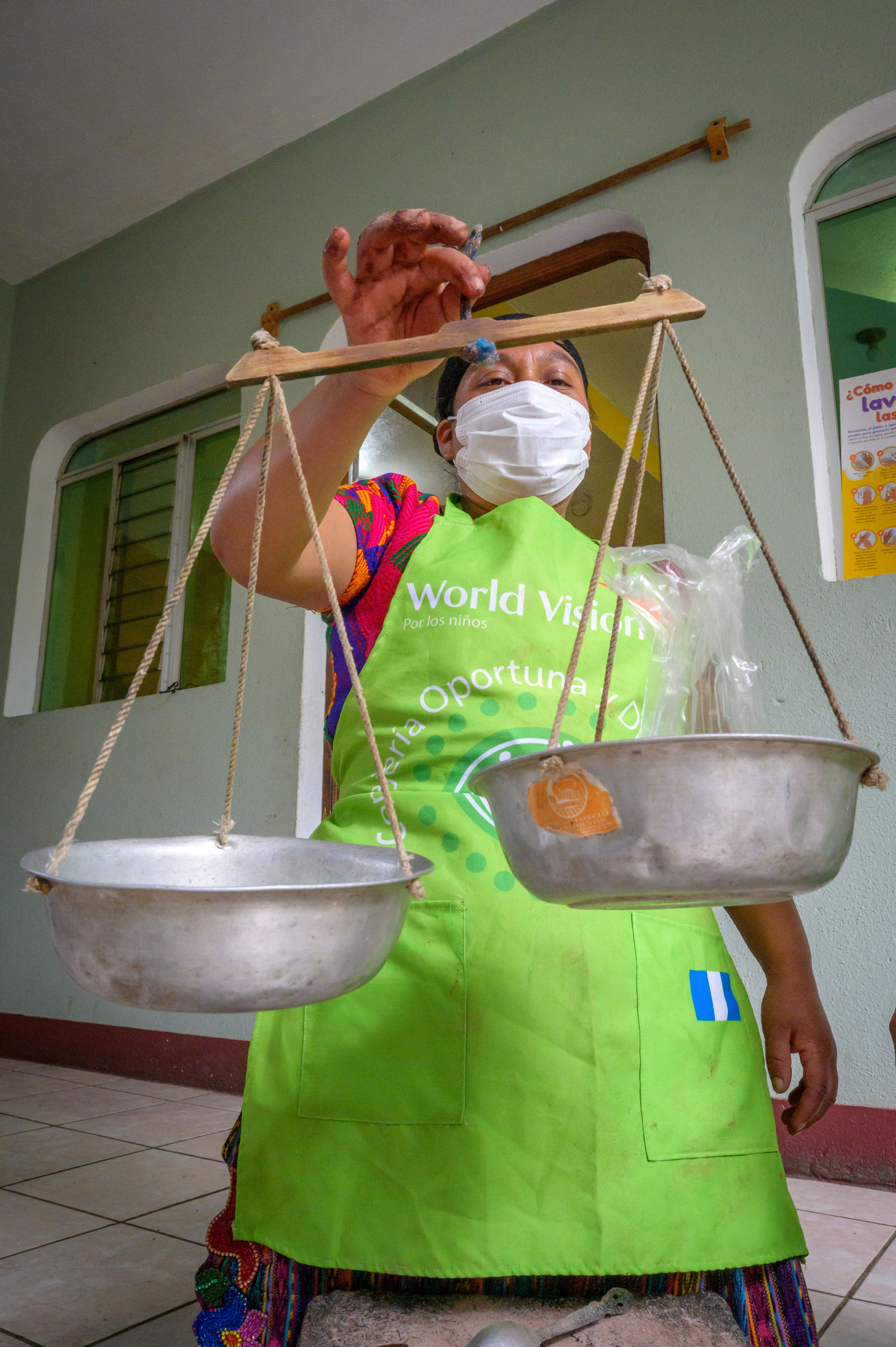
The next step is weighing the bagged chocolate powder so that all sacks contain the same amount.
The next step is weighing the bagged chocolate powder so that all sacks contain the same amount.
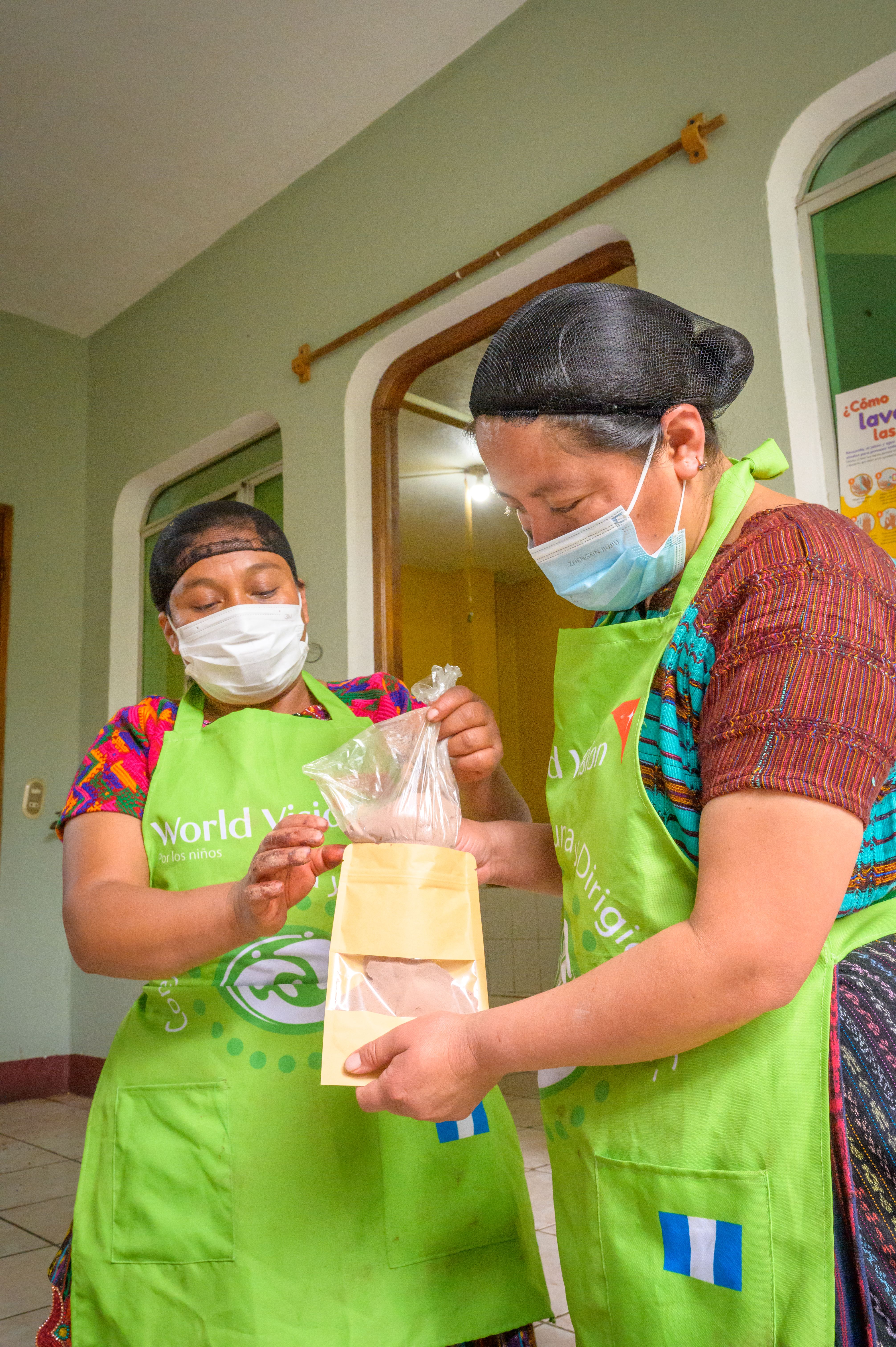
The final step for packaging the hot chocolate mix is putting the plastic bag filled with chocolate inside a paper bag. The label will then be placed on the outside of the paper bag.
The final step for packaging the hot chocolate mix is putting the plastic bag filled with chocolate inside a paper bag. The label will then be placed on the outside of the paper bag.
